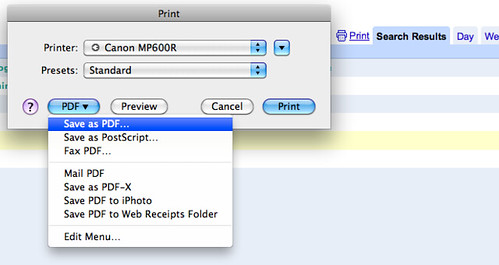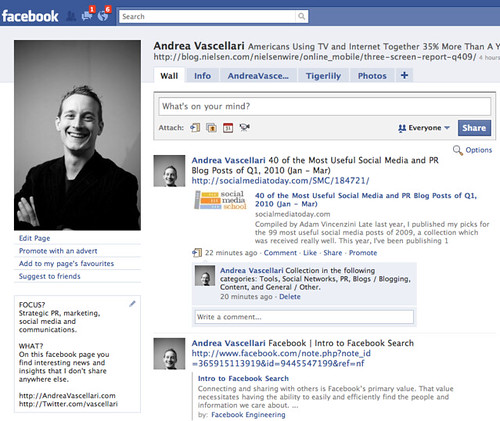Few weeks ago I was in Rome with my ‘Get the Best Out of Twitter‘ for the Ignite Italia -O’Reilly. Among the people I met at the event there was also Robin Good. Inspired by my presentation he decided to invite me for a nice walk at the Villa Borghese park and record a video interview focusing on:
- What steps do you need to take to create a valuable online service or business
- What’s the strategic approach that an individual can follow to create value, authority, credibility and the opportunity to make business online
Video highlights below. Enjoy it!
@Robin: Thanks for the great time, it was nice to see you again! 🙂
Andrea
Video highlights:
Anyone can do what she/he wants for a living
There is one thing that everybody should keep in mind. Nowadays, more than ever before, everyone has a chance of doing what he or she loves for a living.
Going Global
Why? Because we are going global. With a simple blog and few clicks you have the chance of connecting with the entire world. It’s definitely interesting period the one we are living in.
Being Passionate
At the base, before focusing on technology, it’s important to be really passionate about what you are doing. I see way too many people who are unsatisfied with their jobs, and I can’t stand that. Maybe it’s because I am an entrepreneur. I really do what I love. I love my job. That is what I am really passionate about in my life and I think everyone has some passions. I think they should go for it. Online you are instantly connected with the entire world. You will find other people that have your same passions becoming your target audience, whether you do it for business or not.
What you do doesn’t have to be necessarily related to business (it could non-profit etc.) but let’s say that you have the possibility of finding a place to express yourself. Usually, if something is done with passion, you have that drive to go on that usually other people do not have. It’s not going to be easy. Every time you do something, you will find roadblocks. Ultimately, passion is the drive that makes you go on. Nothing really starts or works in first place if you do not really want it badly.
Start By Listening
First thing you should do is to start by listening a little bit what’s going on and understanding who is already out there. Let’s say you want to start your own small business. You should carefully listen to which are the other players in your field and to understand in which environment you will have to move, because sometimes it will happen… you won’t be the first. You definitely have to pay attention to them, and then of course build a presence on the web that express your strategic communications plan. It doesn’t have to be just ‘a blog’, your online presence is going to be the gate between you and the world or your target audience, so it has to be done really carefully.
Jump Into The Conversation
After that, you can start to jump into the conversation that is happening out there – I do not want to say “join” the conversation, because I am sick of hearing it. Everyone is talking about “joining the conversation” and just few people actually do it. Anyway… you have to start to jump into that, where the conversation is already happening, with your audience, with people within your niche. After that, when you establish a basic connection with this environment that is out there, then you can start to be proactive.
Build Trust, Engage Deeper
Once the trust is built, then you can start to engage at a deeper level and eventually this will translate into business. It could also be just for a passion or for the organization you are working for. It just depends on which is your focus and what are your objectives.
When Does The Money Show Up?
The money comes after you establish a real connection with your audience, after your target audience trusts you. The money will come after, as a consequence.
I tell you an example.
Every time I go to Venice – I come from Venice region in Italy – I go to the market on Friday morning. I go there and buy some good fresh fish. There are tons of people that are selling fish, but I always go to the same lady. There is no way I can go and buy fish from anyone else, because I bought fish from her for years.
How she convinced me at first?
- observing the crowd and stopping me when she noticed that I need some fish,
- showing me the really good fish she had,
- why would have been better to buy from her and not from others,
- giving me good tips on how to cook fish, and so on.
She established a real emotional connection, so I trusted her and I became her client.
You can basically do the same online. At that point – after you have built all these connections – is where the money is going to come. It’s going to be a consequence.
Word of Mouth
Another important thing is what you call in Italian “il passaparola“, the power of word of mouth. Happy clients will talk to other potential clients and they will bring them to you. It’s going to be also your community that will help you and your business grow.









